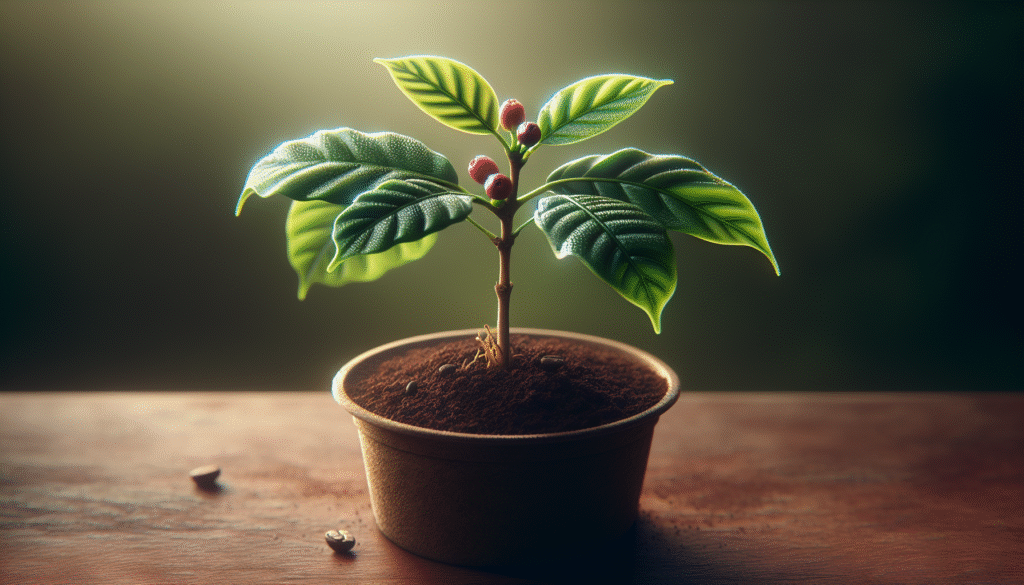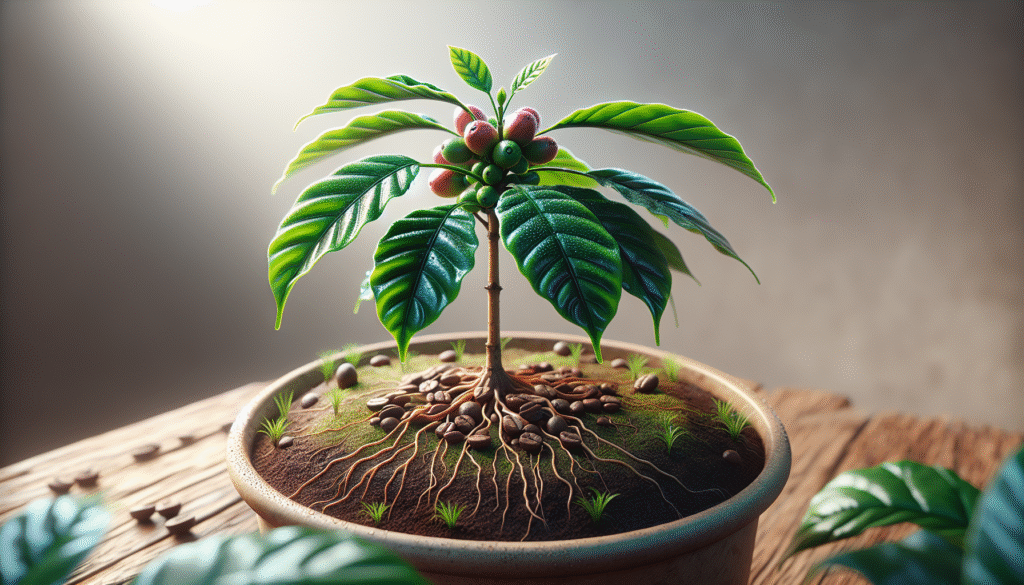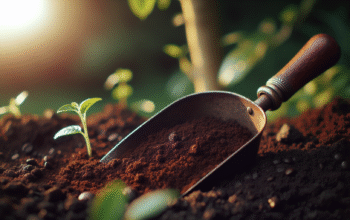?Are you ready to learn how to grow, care for, and get the best from a coffee plant whether it’s on your balcony, in a pot, or across a small farm?

Care and cultivation of the coffee plant
This guide walks you through everything you need to know about coffee plants — from choosing the right species to harvesting and processing your beans. You’ll get practical, step-by-step advice so you can successfully cultivate healthy plants and enjoy home-grown coffee or a productive crop.
Why grow coffee?
Growing coffee can be rewarding: you’ll enjoy attractive foliage, fragrant blossoms, and the satisfaction of producing your own beans. Whether you want a single potted plant as a houseplant or a small orchard, coffee plants adapt to a variety of scales and environments.
Coffee species and varieties
Understanding species and varieties helps you choose the right plant for your climate and goals. The two main commercial species are Coffea arabica and Coffea canephora (Robusta), with many cultivars and hybrids available.
Coffea arabica
Arabica produces superior cup quality, prefers higher altitudes, and is sensitive to heat and frost. You’ll choose Arabica if flavor and aroma are your top priorities and your growing conditions are cool and stable.
Coffea canephora (Robusta)
Robusta is more tolerant of heat, lower altitudes, and pests, but it typically yields a different flavor profile — stronger, more bitter, and with more caffeine. Use Robusta for resilience and higher yields in warmer regions.
Other species and hybrids
There are less common species and hybrids that may suit marginal conditions or offer disease resistance. If you’re in a region with coffee leaf rust or other diseases, look for resistant cultivars.
Climate and site selection
Location strongly influences coffee success. You’ll want conditions that match the species and variety you choose.
Temperature
Coffee thrives in mild, stable temperatures. Arabica prefers daytime temperatures around 18–24°C (64–75°F) and nights 12–18°C (54–64°F). Robusta tolerates warmer ranges. Avoid frost and extreme heat as they stress the plants.
Rainfall and humidity
Coffee needs consistent moisture; ideal annual rainfall is 1,200–2,200 mm (47–87 in) with a dry period for flowering. High humidity helps, but poor drainage or waterlogging causes root disease. You’ll balance irrigation and drainage.
Altitude and sunlight
Arabica benefits from higher altitudes (800–2,200 m) where cooler nights improve flavor development. Coffee grows best under dappled shade rather than full midday sun, especially in hotter climates. You can use shade trees or shade cloth to protect plants.
Soil requirements
Good soil ensures strong root systems and long-term productivity.
Texture and drainage
Coffee prefers deep, well-drained, loamy soils rich in organic matter. Avoid heavy clay that holds water and causes root rot. If you grow in containers, use a mix that drains well but retains moisture.
pH and nutrients
Aim for slightly acidic soil: pH 5.5–6.5 is ideal. Coffee responds to balanced nutrients, especially nitrogen (N), phosphorus (P), potassium (K), calcium, magnesium, and micronutrients. Conduct a soil test to guide fertilization.
Organic matter
Organic matter enhances soil structure, microbial life, and nutrient availability. Use compost, well-rotted manure, or mulch to maintain soil fertility.
Propagation methods
You’ll choose a propagation method based on resources, timeline, and desired genetic traits.
Seed propagation
Growing from seed is common and cost-effective. Seeds must be fresh; germination drops quickly after harvesting. Seeds produce genetic variability, so seedlings may differ in flavor and vigor. Germination typically takes 2–4 weeks.
Step-by-step:
- Soak fresh seeds for 24 hours in water.
- Sow in trays or nursery beds in a loose, sterile medium.
- Keep warm (20–25°C / 68–77°F) and moist but not waterlogged.
- Transplant seedlings when they reach 10–15 cm tall.
Vegetative propagation (cuttings, grafting)
Cuttings and grafting propagate clones of parent plants, preserving desirable traits and disease resistance. Rooted cuttings can take longer to establish but give uniform plants. Grafting can combine a disease-resistant rootstock with a high-quality scion.
Tissue culture
Tissue culture provides disease-free, uniform plants on a commercial scale. It’s intensive but useful when you need many identical plants.
Nursery management
A healthy nursery sets the stage for strong field plants. You’ll want to protect young plants from stress and pests.
Shade and protection
Provide 50–70% shade for seedlings initially, then gradually acclimate to brighter conditions. Protect seedlings from wind, heavy rain, and pests.
Watering and fertilization
Keep the rooting medium consistently moist. Use a balanced, dilute fertilizer during early growth to promote strong root systems and leaf development.
Hardening off
Before transplanting outdoors, harden seedlings by gradually increasing sun exposure and reducing water to prepare them for field conditions.
Planting in the field or containers
Whether you plant in the ground or pots, spacing, depth, and initial care are important.
Spacing and layout
Spacing depends on variety, soil fertility, and whether you use shade trees. Typical spacing is 2.5–3 m between plants and rows for full-size shrubs in commercial systems. In high-density systems you can plant closer, but you’ll need intensive management.
Planting depth and hole preparation
Plant at the same depth as in the nursery, loosen soil in the planting hole, and mix in compost. Avoid burying the stem too deep to prevent rot.
Container cultivation
Coffee grows well in pots if you use a large container (at least 20–30 liters) with good drainage. You’ll need to repot every 1–2 years to renew soil and prevent root bound conditions. Container coffee is great for patios and cooler climates where you can move plants indoors during cold spells.
Watering and irrigation
Proper water management prevents stress and disease. You’ll adjust watering to season and plant size.
Frequency and quantity
Young plants need consistent moisture without saturation. Mature plants need regular watering during dry spells but tolerate brief dry periods. Aim to keep soil evenly moist; allow the top few centimeters to dry slightly between waterings.
Irrigation methods
Drip irrigation is efficient, reduces leaf wetness (which can spread disease), and targets roots. Sprinklers can promote disease if leaves stay wet. Mulching conserves moisture and moderates soil temperature.
Light and shading
Light influences growth, flowering, and bean quality. You’ll balance sunlight and shade to suit your climate.
Why shade matters
Shade reduces heat stress, protects leaves, and can improve cup quality by slowing growth and enhancing bean complexity. Shade trees also add biodiversity and soil protection.
Managing light intensity
In cooler climates, you can give coffee more sun to boost growth. In hotter regions, maintain substantial shade. Prune shade trees to manage light levels over time.
Fertilization and nutrient management
A good fertilization program supports growth, flowering, and bean yield. You’ll tailor inputs to soil tests, plant age, and production goals.
Macronutrient needs
Nitrogen is critical for vegetative growth; potassium supports bean development and disease resistance; phosphorus encourages root and flower formation. Apply N-P-K in balanced ratios and adjust over the year.
Typical fertilization schedule
Use split applications to avoid leaching and to match growth cycles. For example, apply smaller doses every 2–3 months, increasing during active growth or fruit set.
Table: Basic fertilizer application guide (per mature coffee plant per year — adapt to soil test results and local recommendations)
| Growth stage | Frequency | Typical nutrients (annual total) |
|---|---|---|
| Establishment (first 1–2 years) | Every 2–3 months | N: 50–80 g, P: 20–30 g, K: 50–80 g |
| Mature production | Every 2–3 months | N: 150–300 g, P: 40–70 g, K: 200–300 g |
| Rejuvenation / heavy cropping | Split applications based on deficit | Increase N and K as needed |
Adjust these numbers based on plant density, soil fertility, and local extension advice. Consider applying organic matter alongside mineral fertilizers.
Micronutrients and lime
Coffee can show deficiencies in magnesium, calcium, zinc, and boron. Treat specific deficiencies based on leaf tissue analyses. Use lime only if pH is too acidic; some acidity is desirable.
Pruning and training
Pruning shapes plants, facilitates harvesting, and controls disease. You’ll prune both for structure and productivity.
Types of pruning
- Formative pruning: shape young plants into the desired structure.
- Maintenance pruning: remove dead or diseased wood, control height, and open the canopy.
- Rejuvenation/pruning for old plants: heavy pruning to stimulate new growth when productivity declines.
Aim to create a manageable height and open canopy for light and airflow. Regularly remove suckers from the base if you want a single-stem form.
Timing
Prune after harvest or during less active growth periods to encourage new flushes. Avoid heavy pruning just before flowering.
Flowering and fruit development
Understanding the phenology helps you time care and anticipate harvests. Coffee flowers are fragrant and appear after rains or irrigation that follows a dry period.
Flowering triggers
Flowering often follows a dry spell followed by rain. The buds open into white, jasmine-scented flowers that are short-lived but indicate future fruit.
Fruit (cherry) development
Cherries develop over several months; ripening time depends on species and climate. You’ll see green cherries turn yellow, then red or sometimes yellow (depending on variety) when ripe.
Harvesting
Timely harvesting ensures good cup quality. You’ll typically pick ripe cherries by hand for the best results.
Harvest methods
- Selective hand-picking: pick only ripe cherries; best quality but labor-intensive.
- Strip picking: remove all cherries at once; faster but includes unripe and overripe fruit.
- Mechanical harvesting: used in some large operations where terrain allows.
Determining ripeness
Ripe cherries are bright red (or yellow for some varieties) and slightly soft. Taste and experience help you refine timing for peak flavor.
Processing the coffee cherry
After harvest, processing methods affect flavor profile and bean quality. You’ll choose a method that fits your resources and flavor goals.
Washed (wet) processing
Washed processing removes the pulp and mucilage before drying, often producing a cleaner, brighter cup. Steps include depulping, fermentation (or mechanical removal of mucilage), washing, and drying.
Natural (dry) processing
Natural processing dries the whole cherry in the sun before hulling. It can produce fruity, heavy-bodied flavors but requires careful drying to avoid fermentation defects.
Honey (pulped natural) processing
This hybrid method removes the skin but leaves varying amounts of mucilage on the bean during drying. It balances fruity and bright attributes.
Table: Quick comparison of processing methods
| Method | Flavor tendency | Resource needs | Risk factors |
|---|---|---|---|
| Washed | Clean, bright | Water, fermentation tanks | Over-fermentation |
| Natural | Fruity, heavy | Drying beds, space | Uneven drying, mold |
| Honey | Balanced, syrupy | Pulping equipment, drying control | Mucilage fermentation |

Drying and storage
Proper drying and storage preserve bean quality until roasting.
Drying techniques
Dry beans to about 10–12% moisture. Use raised drying beds or patios with frequent turning for uniform drying. Mechanical dryers speed the process but require careful control.
Storage
Store dried green beans in cool, dry, ventilated conditions away from strong odors. Use airtight bags for short-term storage, and avoid prolonged storage that degrades quality.
Roasting basics (overview)
If you plan to roast small batches yourself, a basic understanding helps you map processing to final cup quality. Roasting transforms green beans into the familiar brown coffee seeds — it’s both an art and a science.
Roast levels and flavor
- Light roast: preserves origin character, acidity, and floral notes.
- Medium roast: balanced body and acidity.
- Dark roast: more body, smoky notes, less origin character.
Start with small test roasts to find your preferred profile.
Pest and disease management
You’ll encounter pests and diseases depending on your region. Integrated pest management (IPM) is the best approach: combine cultural, biological, and chemical tools as needed.
Common pests
- Coffee berry borer (Hypothenemus hampei): tunnels into cherries and ruins beans.
- Mealybugs and scale: sap-sucking insects that weaken plants.
- Leaf miners and caterpillars: defoliate leaves.
Common diseases
- Coffee leaf rust (Hemileia vastatrix): causes defoliation and yield loss; choose resistant varieties and manage shade and nutrition.
- Root rots (Phytophthora spp.): related to poor drainage.
- Coffee berry disease: affects cherries in humid climates.
Table: Pest and disease quick actions
| Problem | Signs | Immediate actions |
|---|---|---|
| Coffee berry borer | Small holes in cherries, tiny beetles | Sanitation (remove infected cherries), traps, timely harvesting |
| Leaf rust | Orange powder on leaves, defoliation | Select resistant varieties, prune for airflow, fungicide if needed |
| Root rot | Wilting, poor growth, black roots | Improve drainage, remove infected plants, use resistant rootstocks |
Cultural controls
Sanitation (collecting and destroying fallen cherries), proper spacing, pruning, shade management, and good nutrition reduce pest pressure.
Biological and chemical controls
Encourage natural predators and use targeted pesticides only when necessary. For small-scale growers, trapping and careful, minimal chemical use often suffice.
Intercropping and agroforestry
Coffee often thrives in multi-species systems that mimic natural forests. You’ll benefit from shade trees that provide nutrients, timber, fruit, and habitat for beneficial organisms.
Benefits
Shade trees improve microclimate, soil fertility, biodiversity, and long-term sustainability. They can also provide an additional income stream.
Choosing companion species
Select nitrogen-fixing trees, fruit trees, or timber species with compatible root systems and canopy structures. Avoid allelopathic species that suppress coffee growth.
Scaling from potted plants to a small farm
Your care routine changes as you scale. Containers need more frequent water and nutrient updates, while orchards need spacing, shade design, and labor planning.
Small-scale home growers
You’ll focus on container mixes, temperature protection, pruning for size control, and indoor wintering if necessary.
Farm-scale management
You’ll plan layouts, shade tree systems, irrigation infrastructure, pest scouting protocols, and a harvest/processing workflow.
Troubleshooting common problems
When something goes wrong, a systematic approach helps: check water, light, soil, and pests in that order.
Table: Troubleshooting quick guide
| Symptom | Likely cause | Solution |
|---|---|---|
| Yellowing leaves | Overwatering, nutrient deficiency, pH | Check drainage, adjust fertilization, test pH |
| Stunted growth | Poor soil, root damage, pests | Improve soil fertility, inspect roots, treat pests |
| Leaf spots | Fungal disease | Improve airflow, remove infected leaves, apply fungicide if needed |
| Poor flowering | Excess nitrogen, lack of dry period, shading | Reduce N, adjust watering schedule, manage shade |
Harvesting schedule and productivity expectations
Expect first significant yields 2–4 years after planting (seedling) and full production by around 4–7 years. Productivity varies by variety, site, and management.
Yield factors
Yield depends on plant health, fertilizer, water, spacing, and pest control. Good management and appropriate variety selection maximize returns.
Economic and sustainability considerations
Growing coffee responsibly improves long-term returns and local ecosystems. You’ll weigh inputs against yield, invest in soil health, and consider fair labor and market access.
Organic vs conventional
Organic methods reduce chemical inputs and can fetch premium prices but require strict practices for certification. Conventional systems often yield more quickly but must manage environmental risks.
Certification and market options
If you plan to sell, look into certifying bodies and specialty coffee channels. Small-batch producers often find local markets, cooperatives, or specialty roasters interested in traceable, high-quality beans.
Tips for success
A few practical suggestions help you avoid common pitfalls:
- Start with healthy nursery stock or fresh seeds.
- Test your soil and follow recommendations rather than guessing.
- Keep detailed records of fertilization, pruning, and harvest dates.
- Prioritize sanitary practices and timely harvesting to prevent pests.
- Be patient — coffee is a long-term crop that rewards consistent care.
Frequently asked questions
You’ll have specific questions as you go; here are answers to common ones.
Can you grow coffee indoors?
Yes. Place plants near bright, indirect light, maintain steady temperatures, and water consistently. Expect slower growth than outdoors.
How many beans does one plant produce?
A mature plant might produce 1–10 kg of green coffee per year depending on variety, care, and environment. Expect variability in small-scale systems.
How long does a coffee plant live?
Coffee plants can live for decades with good care. Productivity dips after 20–30 years, but rejuvenation pruning or replanting can restore yields.
Final thoughts
Growing coffee is a patient, rewarding pursuit. You’ll blend horticultural skill with taste preferences to produce beans that reflect your care. Whether you’re tending one potted plant or managing a small farm, consistent attention to soil, water, light, and pest management will bring healthy plants and satisfying harvests.
If you’d like, you can tell me your climate zone, space availability, and whether you prefer Arabica or Robusta, and I’ll give a tailored planting and care plan for your situation.



